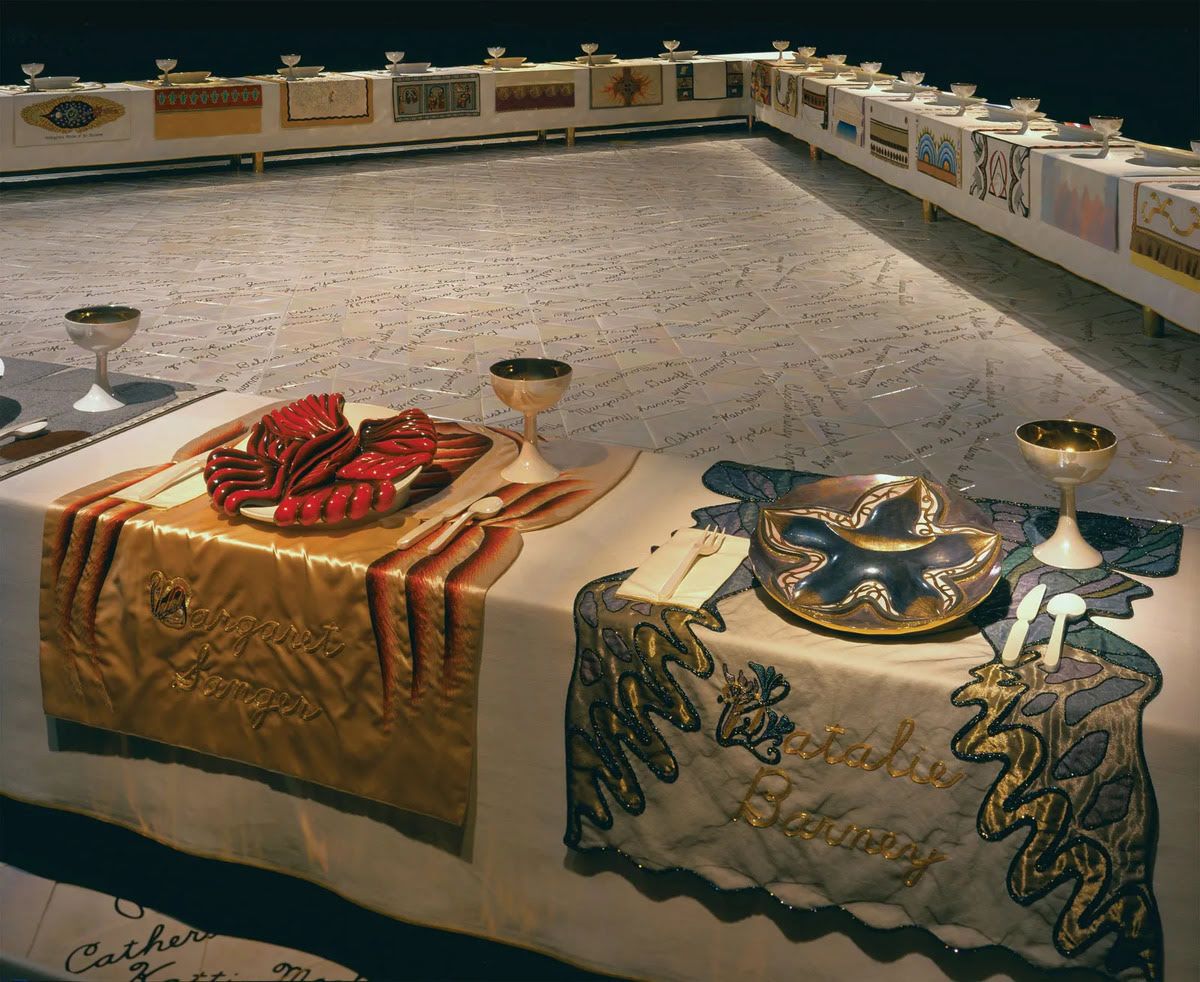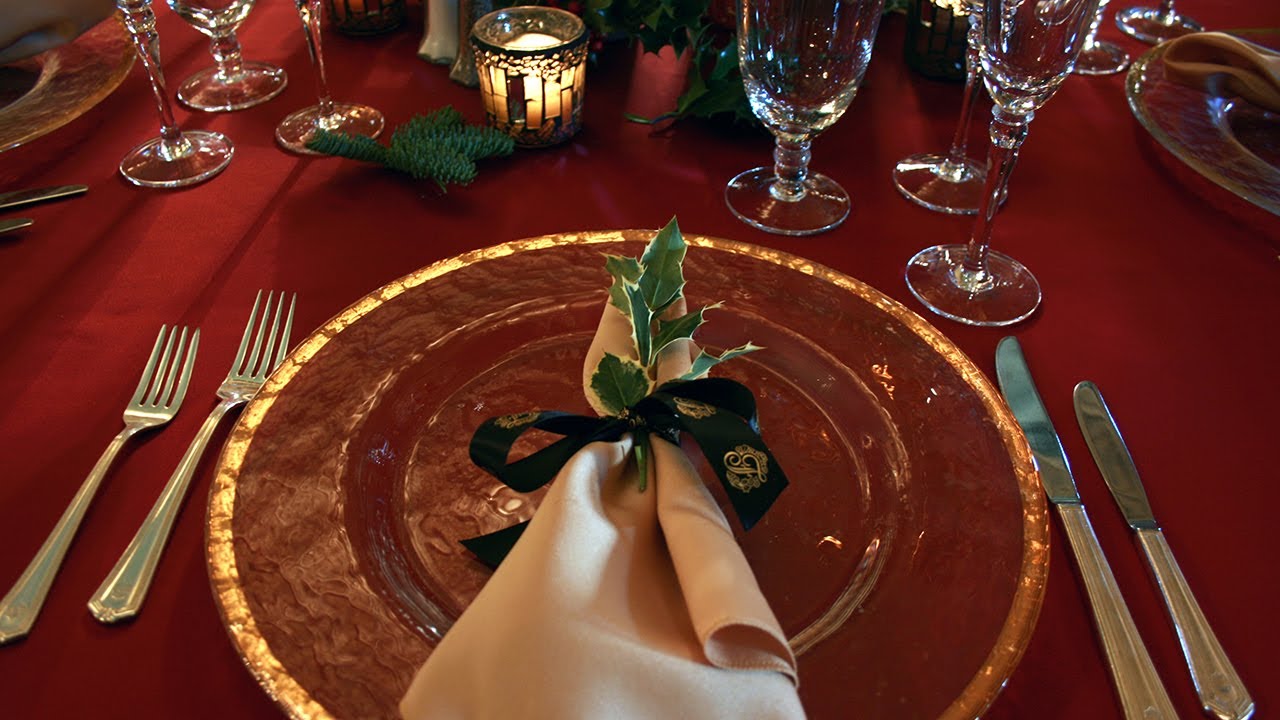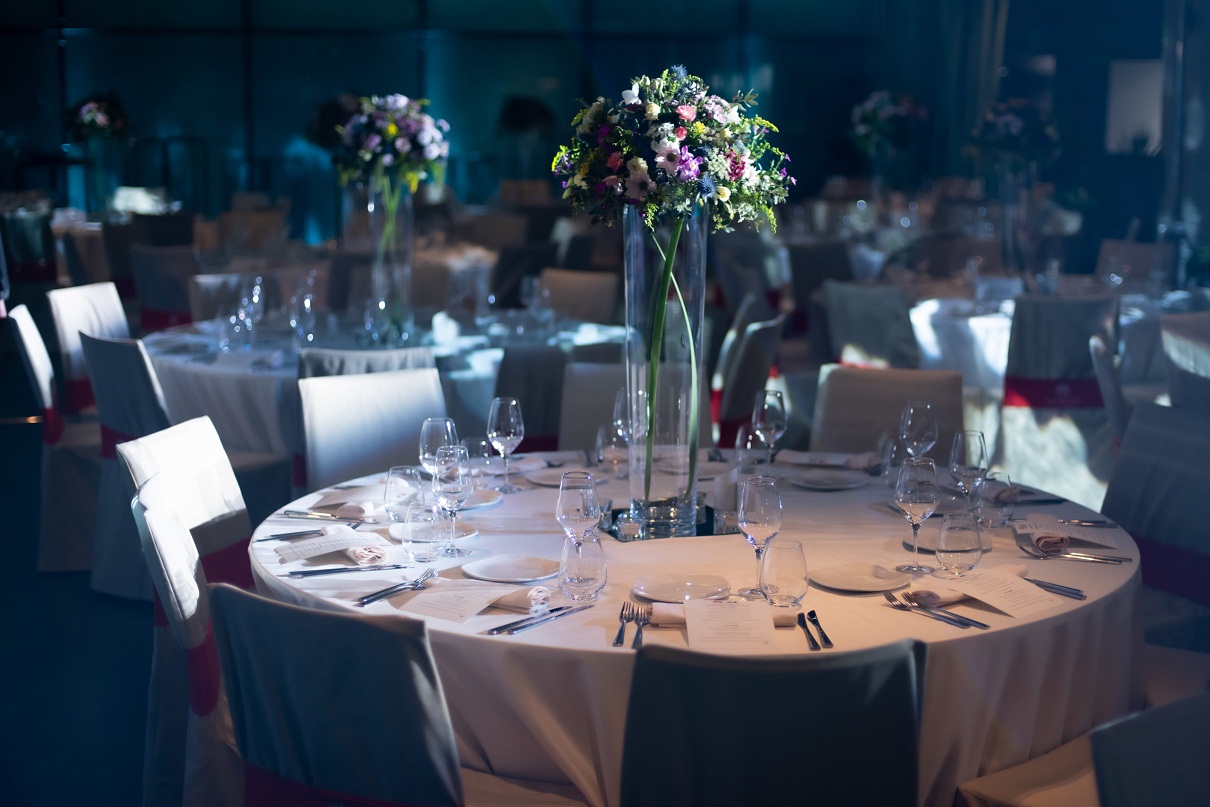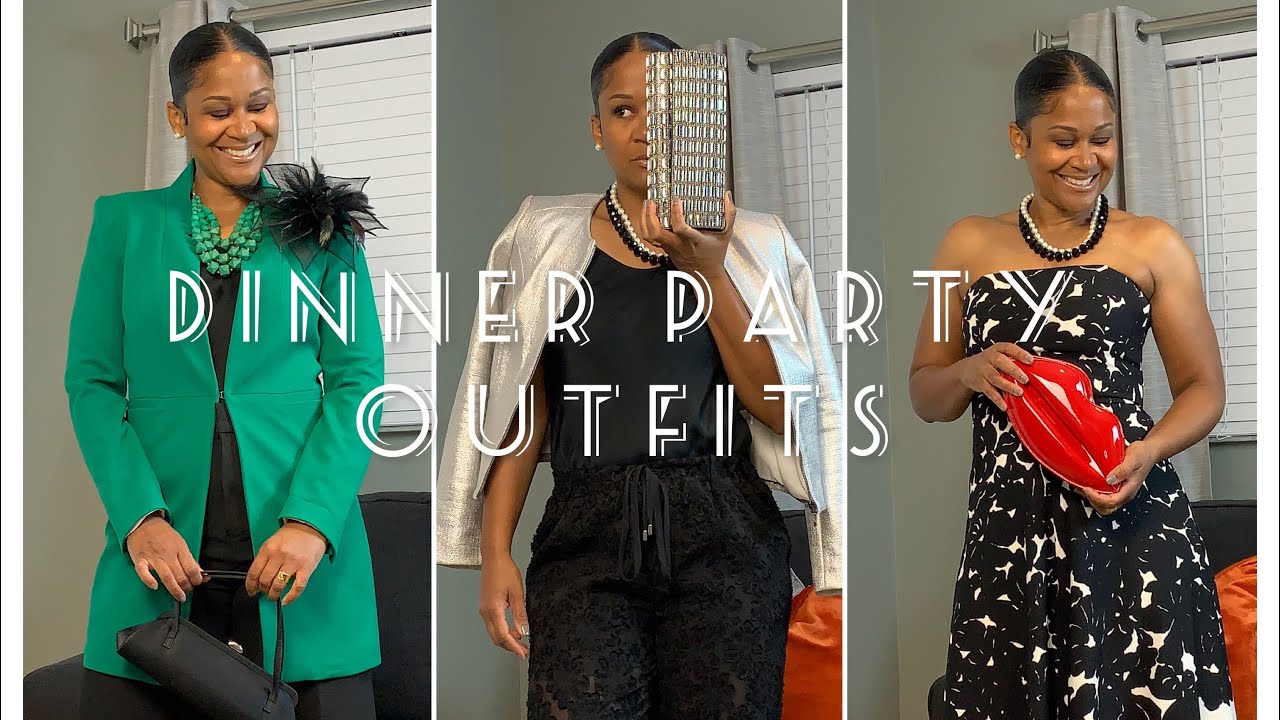Home>Dining>Tableware>How Many Place Settings Are There For The Historical Women At The Dinner Party?


Tableware
How Many Place Settings Are There For The Historical Women At The Dinner Party?
Modified: January 4, 2024
Discover the number of place settings for the historical women at The Dinner Party and explore the stunning range of tableware used in this iconic feminist artwork.
(Many of the links in this article redirect to a specific reviewed product. Your purchase of these products through affiliate links helps to generate commission for Storables.com, at no extra cost. Learn more)
Introduction
Judy Chicago’s masterpiece, “The Dinner Party,” is not just an ordinary table setting. It is a tribute to the history and achievements of women throughout time. This groundbreaking artwork, unveiled in 1979, showcases an intricate banquet table with place settings for 39 historical women who made significant contributions to society. Each place setting is meticulously designed to reflect the individuality and impact of these remarkable women.
The Dinner Party has become a symbol of feminism, celebrating the often overlooked achievements of women and challenging the patriarchal narrative of history. The tableware, chosen with great care and attention to detail, serves as a medium to honor and remember these extraordinary women.
In this article, we will explore the significance of The Dinner Party and delve into the fascinating process of selecting the women represented. We will also uncover the controversies and criticisms surrounding this iconic artwork. So, grab your seat at the table, and let’s delve into the world of historical women at The Dinner Party!
Key Takeaways:
- The Dinner Party by Judy Chicago features 39 place settings, each meticulously designed to honor historical women from diverse fields and cultures, challenging traditional narratives and celebrating women’s achievements.
- Through intricate tableware and symbolism, The Dinner Party serves as a powerful reminder of the immeasurable impact of women throughout history, sparking important conversations about representation and inclusivity.
Read more: How To Host A Dinner Party
Judy Chicago’s The Dinner Party
Judy Chicago, a renowned feminist artist, conceived the idea for The Dinner Party in the 1970s as a way to celebrate women’s accomplishments and reclaim their place in history. This monumental artwork took nearly five years to complete and involved a team of talented artists, historians, and craftspeople.
The Dinner Party is a massive triangular table measuring 48 feet on each side, with a total of 39 place settings. Each place setting represents a historical or mythological woman who has made significant contributions to society in various fields such as art, literature, science, and politics.
Chicago’s artistic vision was not limited to the table settings alone. The whole installation is a sensory experience, complete with an elaborate floor design called the Heritage Floor. This intricately designed floor contains the names of 999 additional women who have played important roles throughout history.
One of the striking aspects of Chicago’s artwork is the inclusion of unconventional materials in the place settings. Each setting features a porcelain plate, a unique embroidered runner, and a chalice on a triangular base. The plate showcases a butterfly-shaped design, which symbolizes female genitalia and represents the life force and transformation.
The embroidered runners for each setting depict significant symbols and imagery related to the life and work of the woman being represented. The chalice, adorned with intricate detailing, serves as a metaphor for womanhood and spirituality.
The Dinner Party was unveiled in 1979 at the San Francisco Museum of Modern Art and later became a touring exhibition, captivating audiences around the world. This monumental artwork continues to inspire and provoke discussions about the representation of women in history and the arts.
Historical Women Represented
The Dinner Party pays homage to a diverse range of historical women, spanning different time periods and cultural backgrounds. Each place setting is carefully crafted to reflect the unique contributions and significance of the woman it represents. Let’s explore some of the notable historical women included in The Dinner Party:
- Sojourner Truth: A prominent African-American abolitionist and women’s rights activist, known for her powerful speeches on equality and justice.
- Sappho: An ancient Greek poet known for her lyrical poetry that explored themes of love and desire.
- Virginia Woolf: A pioneering British writer and feminist philosopher who challenged societal expectations of women.
- Frida Kahlo: A Mexican artist known for her vibrant and introspective self-portraits, exploring themes of identity, pain, and resilience.
- Marie Curie: A groundbreaking physicist and chemist who conducted pioneering research on radioactivity and became the first woman to win a Nobel Prize.
- Sojourner Truth: A prominent African-American abolitionist and women’s rights activist, known for her powerful speeches on equality and justice.
- Sappho: An ancient Greek poet known for her lyrical poetry that explored themes of love and desire.
- Virginia Woolf: A pioneering British writer and feminist philosopher who challenged societal expectations of women.
- Frida Kahlo: A Mexican artist known for her vibrant and introspective self-portraits, exploring themes of identity, pain, and resilience.
- Marie Curie: A groundbreaking physicist and chemist who conducted pioneering research on radioactivity and became the first woman to win a Nobel Prize.
These are just a few examples of the remarkable women represented at The Dinner Party. Each woman was carefully chosen to represent various fields of accomplishment, cultural diversity, and historical contexts. Their place settings are a testament to their indelible mark on the world and their contribution to shaping history.
Place Settings for Historical Women
The place settings at The Dinner Party are not mere placeholders; they are a thoughtfully crafted tribute to the achievements and significance of each historical woman being honored. Let’s take a closer look at the elements that make up these remarkable place settings:
1. Porcelain Plate: Each woman’s place setting features a unique porcelain plate in the shape of a butterfly. The butterfly shape symbolizes transformation, femininity, and the life force. The intricate designs on the plates incorporate imagery and symbols that reflect the theme or work of the woman being represented.
2. Embroidered Runner: Running across the table beneath each place setting is an embroidered runner. These runners are meticulously crafted with vibrant colors and intricate patterns that hold symbolic meaning related to the life and achievements of the woman being honored. The embroidered designs often incorporate elements from the woman’s work or cultural background.
3. Chalice: In the center of each setting sits a striking chalice. The chalice, which represents womanhood and spirituality, is adorned with intricate detailing and serves as a symbolic vessel of honor and respect. The design of the chalice is carefully chosen to complement the overall theme of the place setting and reflect the personality or accomplishments of the woman being celebrated.
Together, these elements create a visual representation of the woman’s contributions and legacy. They serve as reminders of the importance of celebrating and recognizing the achievements of women throughout history, while also challenging traditional notions of male-dominated narratives.
The intricate details of each place setting, from the symbolism in the porcelain plates to the carefully chosen embroidered designs, demonstrate the meticulous thought and research that went into honoring these remarkable women. Chicago and her team sought to create a visually stunning and meaningful experience for viewers, inviting them to learn about and celebrate the historical figures represented.
As you move around The Dinner Party, taking in the array of place settings, you are transported into the lives and stories of these women, gaining a deeper appreciation for their legacy and the impact they have had on society.
The Dinner Party by Judy Chicago features 39 place settings, each representing a historical or mythical woman.
The Process of Selecting Women
The process of selecting the historical women to be represented at The Dinner Party was a meticulous and comprehensive undertaking. Judy Chicago and her team of researchers, art historians, and scholars dedicated countless hours to identify and celebrate women from various fields and time periods. Here’s a glimpse into the process they followed:
Research: The first step in selecting the women was extensive research. Chicago and her team scoured historical documents, books, and archival materials to identify women who had made significant contributions in their respective fields. They sought to include women from diverse backgrounds, cultures, and time periods to ensure a broad representation.
Consultation: Chicago also consulted with experts in different fields to gain insights into lesser-known women who deserved recognition. These experts included historians, curators, and scholars who specialized in women’s history, art history, and various academic disciplines.
Critical Evaluation: Once a list of potential women was compiled, the team critically evaluated each candidate based on their accomplishments, impact, and historical significance. They considered factors such as the women’s influence on their respective fields, the barriers they faced, and the long-term effects of their work.
Inclusion Criteria: The final selection of women for The Dinner Party was based on a set of inclusion criteria. The team looked for women who had achieved notable breakthroughs, shattered societal norms, or made groundbreaking contributions. They also sought to include women who represented a wide range of fields, including science, politics, literature, art, and more.
Cultural Diversity: Another important aspect of the selection process was ensuring cultural diversity. The team wanted to represent women from different regions and backgrounds, acknowledging the global scope of women’s achievements throughout history.
Artist’s Perspective: Ultimately, Judy Chicago had the final say in selecting the women to be included. She brought her artistic vision and personal perspective to the process, carefully curating a diverse and representative group of historical women.
The process of selecting the women for The Dinner Party was a collaborative effort, guided by extensive research, consultation, and critical evaluation. The aim was to create a balanced and inclusive representation of women’s achievements throughout history, ultimately honoring their contributions and inspiring future generations.
Read more: How To Organize A Dinner Party
The Number of Place Settings at The Dinner Party
The Dinner Party is comprised of a total of 39 place settings, each representing a historical woman who made significant contributions to society. The number 39 was intentionally chosen to symbolize the exclusion and underrepresentation of women throughout history and in traditional narratives.
The triangular table of The Dinner Party measures 48 feet on each side, and each place setting is strategically arranged to create a visually stunning and impactful experience for viewers. Visitors can walk around the table, exploring the different place settings and immersing themselves in the stories and achievements of these remarkable women.
Chicago and her team carefully selected the women to be represented, ensuring a wide range of fields and time periods were included. From scientists and writers to artists and political activists, the place settings at The Dinner Party highlight the diversity and richness of women’s contributions to society.
As visitors move along the table, they encounter names such as Virginia Woolf, Frida Kahlo, Sojourner Truth, and Marie Curie, among many others. Each place setting provides a glimpse into the life and accomplishments of the woman being honored, inviting viewers to reflect on the often overlooked contributions of women throughout history.
The number 39 was not chosen arbitrarily; it represents a deliberate effort to challenge and disrupt the male-centric narratives that have dominated historical accounts. By placing these women at the table, The Dinner Party asserts the importance of recognizing their achievements and reaffirms their rightful place in shaping our collective history.
It is worth noting that The Dinner Party is not meant to be an exhaustive or conclusive representation of all women who have made significant contributions. Rather, it serves as a starting point, a celebration of the accomplishments of these 39 women, and a catalyst for further exploration and recognition of women’s achievements across time and cultures.
Whether it’s through the place settings, the symbolism embedded in the tableware, or the thought-provoking floor installation with the names of 999 additional women, The Dinner Party offers a powerful visual reminder of the immeasurable impact women have had on the world, and a call to continue honoring and uplifting their stories.
Controversies and Criticisms
While The Dinner Party has been widely acclaimed for its groundbreaking representation of historical women, it has also faced its fair share of controversies and criticisms. Let’s explore some of the key issues raised by critics:
Exclusivity: One frequent criticism is the perceived exclusivity of the women chosen for The Dinner Party. Some argue that certain historical periods or regions are underrepresented, leading to a limited perspective on women’s accomplishments. Critics suggest that the selection process may have overlooked or marginalized women from non-Western cultures or marginalized backgrounds.
Essentialism: Another critique revolves around the symbolism and visual imagery used in The Dinner Party. Some argue that the focus on feminine symbolism, such as the butterfly-shaped plates, may reinforce essentialist notions of femininity, potentially reducing women’s accomplishments to their gender. Critics contend that this approach can perpetuate gender stereotypes rather than challenging them.
Incomplete Storytelling: Some critics question the approach of representing historical women through individual place settings, arguing that this format limits the ability to capture the interdisciplinary and interconnected nature of women’s contributions. They believe that a more holistic approach could have provided a deeper understanding of the complex and multifaceted experiences of these women.
Artist’s Subjectivity: As with any artistic creation, The Dinner Party is a reflection of the artist’s subjective interpretation and vision. Some critics argue that Judy Chicago’s personal biases may have influenced the selection and portrayal of the historical women, potentially skewing the representation and interpretation of their contributions.
Controversial Figures: The inclusion of certain controversial figures among the historical women has also sparked debate. Critics argue that some women represented at The Dinner Party may have held controversial or objectionable beliefs or actions that warrant further scrutiny and discussion. The inclusion of these figures raises questions about how to navigate the complexities of representing historical figures with both positive and problematic aspects.
It is important to note that while these criticisms exist, they do not diminish the overall impact and significance of The Dinner Party. Rather, they serve as starting points for important conversations about representation, historical narratives, and the complexities of honoring women’s achievements.
As with any artwork, The Dinner Party invites a range of interpretations and perspectives. It continues to inspire dialogue surrounding the representation of women’s history and serves as a catalyst for ongoing discussions about the importance of intersectionality and inclusivity in our understanding of women’s contributions throughout time.
Conclusion
Judy Chicago’s The Dinner Party is not just a table setting, but a powerful artistic statement that celebrates the accomplishments of historical women. Through meticulous research, thoughtful curation, and intricate design, Chicago and her team have created a profound homage to the resilience, brilliance, and influence of women throughout history.
The Dinner Party challenges traditional historical narratives that have often sidelined or neglected women’s contributions. By showcasing 39 place settings representing diverse women from various fields and time periods, The Dinner Party asserts the importance of recognizing and honoring the achievements of women in shaping our collective history.
While the artwork has faced criticisms and controversies, it has also sparked important conversations about representation, inclusivity, and the complexities of portraying historical figures. These discussions further uphold the significance of The Dinner Party as not just an art installation, but as a catalyst for dialogue and reflection.
As we walk around the triangular table, admiring the porcelain plates, embroidered runners, and symbolic chalices, we are reminded of the resilience and strength of these women who defied societal expectations and pushed boundaries in their respective fields. We are invited to learn their stories, recognize their accomplishments, and continue to celebrate and uplift women’s achievements in all aspects of life.
The Dinner Party serves as a transformative and educational experience. It sheds light on the often-overlooked contributions of women, inspiring us to question gender biases in historical narratives and embrace a more inclusive understanding of our shared past. It ignites a passion for knowledge, activism, and empowerment, encouraging us to carry the legacy of these remarkable historical women forward.
Ultimately, The Dinner Party reaffirms the importance of representation and the power of art to challenge and reshape societal norms. By placing historical women at the center of the conversation, it paves the way for a future where women’s achievements are acknowledged, celebrated, and woven into the fabric of our collective memory.
Frequently Asked Questions about How Many Place Settings Are There For The Historical Women At The Dinner Party?
Was this page helpful?
At Storables.com, we guarantee accurate and reliable information. Our content, validated by Expert Board Contributors, is crafted following stringent Editorial Policies. We're committed to providing you with well-researched, expert-backed insights for all your informational needs.















0 thoughts on “How Many Place Settings Are There For The Historical Women At The Dinner Party?”